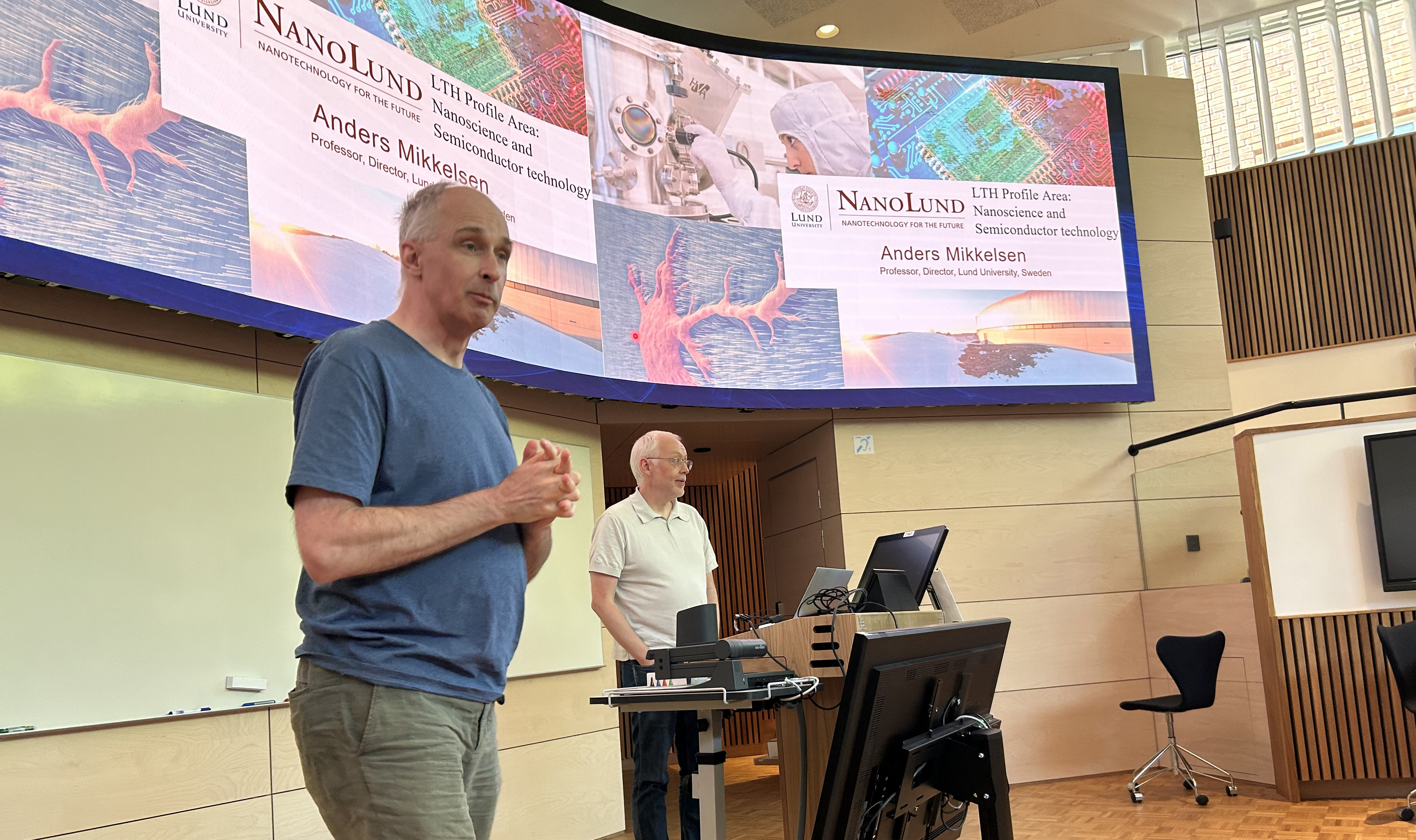Profile areas explore cross-disciplinary collaborations
On 17 May, the Energy Transition profile area organised a lunch seminar with colleagues from the Nanoscience and Semiconductor Technology profile area. The aim was to learn more about nanoscience and the work that the profile area does to identify potential collaboration opportunities between the two groups.
Cecilia Schubert – Publicerad den 27 May 2024

The seminar attracted around twenty engaged participants, including researchers and PhD students, who were eager to explore the topic further. During the seminar, three speakers presented their research and shared insights on possible collaborations:
- Anders Mikkelsen, coordinator and professor of Synchrotron Light Physics, gave an introduction to nanoscience and semiconductor technology
- Vanya Darakchieva, professor and director of C3Nit - a Vinnova competence centre, spoke about next-generation semiconductors for sustainable electronics
- Magnus Borgström, professor of Solid State Physics, discussed nanowire-based solar cells and LEDs
It became clear during the seminar that there are several potential opportunities for collaboration between the two profile areas. In particular, the COMPEL initiative on electrification and battery research offers a promising platform for joint work. COMPEL (COMPetitiveness for the ELectrification of the transport system) is part of the Energy Transition profile area and is a collaboration platform between Chalmers, Lund University, and Uppsala University.
Read more about the government's support and investment in Compel (in Swedish)
Subsequent discussions showed great interest in finding synergies and strengthening collaboration between the two profile areas.
The next step will be for the Energy Transition profile area to present itself to the nanoscience research group in early autumn to continue exploring how the areas can benefit from each other's expertise.
"I see several potential opportunities for collaboration between our two profile areas. It will be exciting to explore these together with our colleagues who came by and introduced their topics and research. I myself learnt a lot of new things", says Olof Samuelsson, professor and coordinator of the Energy Transition profile area.
The Energy Transition profile area regularly organises lunch seminars aimed primarily at researchers in the thematic area, with the aim of networking and exploring
